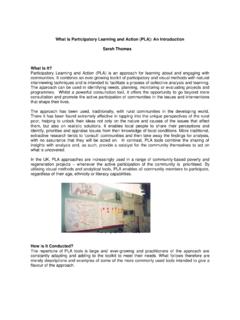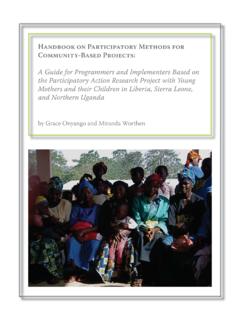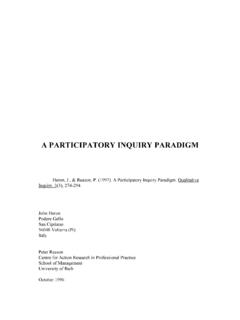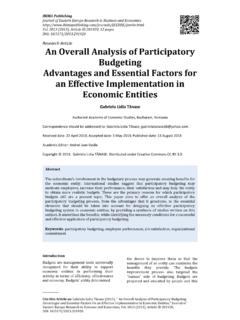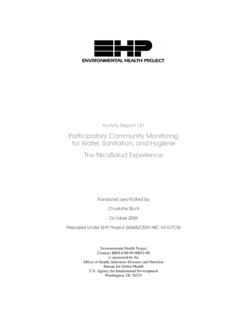Transcription of A Participatory Model of the Atonement - …
1 A Participatory Model of the Atonement Tim Bayne St. Catherine's College, University of Oxford Greg Restall School of Philosophy, The University of Melbourne Abstract In this paper we develop a Participatory Model of the Christian doctrine of the Atonement , according to which the Atonement involves participating in the death and resurrection of Christ. In part one we argue that current models of the Atonement exemplary, penal, substitutionary and merit models are unsatisfactory. The central problem with these models is that they assume a purely deontic conception of sin and, as a result, they fail to address sin as a relational and ontological problem.
2 In part two we argue that a Participatory Model of the Atonement is both exegetically and philosophically plausible, and should be taken seriously within philosophical What? Humanity sins but it's God's Son who pays the price? I tried to imagine Father saying to me, Piscine, a lion slipped into the llama pen today and killed two llamas. Yesterday another one killed a black buck. Last week two of them ate the camel. The week before it was painted storks and grey herons. And who's to say for sure who snacked on our golden agouti? The situation has become intolerable.
3 Something must be done. I have decided that the only way the lions can atone for their sins is if I feed you to them.. Yes, Father, that would be the right and logical thing to do. Give me a moment to wash up.. What a downright weird story. What peculiar psychology. Life of Pi, Yann Martel The Atonement is at the heart of Christian theology. However, the Atonement has not been at the heart of 20th Century Christian philosophy of religion: at least, you would not get the impression that it was from the volume of literature on the topic. Nonetheless, in recent years there has been a noticeable change in the intellectual climate, with a number of philosophers articulating models of the Atonement .
4 Although much of this work contains valuable insights, it Draft only, please do not cite 1 December 2007. also suffers from a notable lack of engagement with work in theology and New Testament scholarship. Contributors to the philosophical discussion of the Atonement have been almost exclusively concerned with what we might call Abelard's constraint: their goal has been to develop a Model of the Atonement that is neither unintelligible, arbitrary, illogical nor immoral. While Abelard's constraint is perfectly acceptable (who would not prefer a theory which was intelligible, non-arbitrary, consistent and morally acceptable over one which was not?)
5 , accounts of the Atonement should also be informed and constrained by the reflection on the Atonement and salvation through the New Testament and in later church Any account that is not informed either by Scripture or by tradition forfeits its right to be thought of as a Christian account of the Atonement , and the more an account is so informed, the better candidate it can be for being properly Christian In this chapter we argue that philosophical accounts of the Atonement have much to learn from recent work in New Testament scholarship, in particular, Pauline scholarship.
6 1. Current models of the Atonement A Model of the Atonement is a Model of God's way of dealing with sin. In light of this, it is useful to taxonomize models of the Atonement in terms of their conception of sin. Roughly speaking, one might conceptualise sin in three ways: ontologically; deontically; and relationally. An ontological conception of sin conceives of it as a feature or element of human nature; it is something from which we suffer. One might also call it a pathological conception of sin, for it conceives of sin as a sickness. A deontic conception of sin conceives of sin in terms of a failure to fulfil our moral obligations.
7 Sin, on this view, is immoral behaviour, and it results in a moral debt; it involves a debit in our moral ledger. A relational conception of sin conceives of it in terms of broken or alienated relationships; sin, on this view, consists in the fact that our relationship with God and each other is not what it ought to be. These three models of sin are not necessarily mutually exclusive perhaps a pluralist account of the Atonement could view sin through the lens of all three models but they are substantively different, and treatments of the Draft only, please do not cite 2 December 2007.
8 Atonement tend to privilege one conception at the expense of the others by foregrounding some considerations and backgrounding others, or by explaining features playing an explanatory role in one Model in terms of features central to another. Deontic Models By far the dominant approach to the Atonement in philosophical theology is deontic. Penal, satisfaction, merit and sacrificial models of the Atonement are all deontic models in that they conceive of the Atonement as dealing with a problem of moral debt. These models present different accounts of how God deals with this debt, but they are united in their conception of sin as first and foremost a deontic problem it is a problem of moral debt.
9 According to Anselm's satisfaction Model in Cur Deus Homo, the debt is paid when Christ gives God the honour that the human race owes him (see Aspenson 1990 for a contemporary discussion). The debt is dealt with by payment: the death of Christ qualifies as payment for the sin of humanity. According to the penal Model (Morris 1966; Packer 1974; Porter 2002), the debt is dealt with by punishment: Christ is punished in place of our non-payment of the debt. On Swinburne's (1989) sacrificial Model , Christ's death constitutes reparation and penance for non-payment of the debt.
10 And on the merit Model the debt of sin is forgiven rather than repaid: Christ's life and death is a meritorious act that persuades God to forgive the debt (Quinn 1994;. Cross 2001; Putrill 1991). A number of specific objections can be levelled against particular deontic models of the Atonement but rather than pursue these objections we want to explore generic objections to deontic accounts of the The grounds of our obligation Somewhat curiously, proponents of the deontic conception of sin have said little about the nature of the moral obligations that we are assumed to have.

